Natural suede: features, advice on selection and care
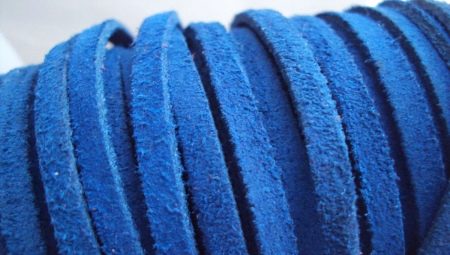
Natural suede is actively used in the production of clothing, shoes, bags and various accessories. The popularity of this material led to the emergence of an artificial analogue, however, the relevance of the natural product remained high.
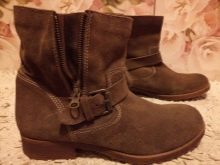
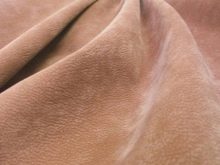

History
According to historical data, the manufacture of suede began in the 4th century AD, and to this day it is in demand among modern consumers.
There are two versions of the origin of the name.
- Some believe that they took the word chamois as a basis - so in the Middle Ages, French furriers denoted a special leather.
- There is an opinion that modern “suede” came from the word zeem - this is how goats were called in the territory of Holland in ancient times, the skin of which was used for the production of beautiful and pleasant to the touch material.


Range
Even the highest quality artificial analogs cannot be compared with natural suede in terms of beauty and performance.
As a rule, clothing and footwear made from the above raw materials are in great demand during the cold season (late autumn, winter and early spring). Both classic and modern designer looks are complemented with various accessories, such as gloves, jewelry, belts, wallets.
The peculiarity of the material is that it combines convenience and beauty. Despite the high price of some products, the products remain in demand.
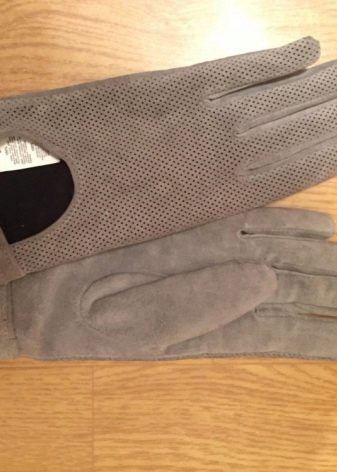

Production
Buyers are offered two types of natural material that differ not only in appearance, but also in performance. The quality of the products depends on the leather used in the production.
- Refined. This type of material requires chamois, deer or goat leather. If you correctly follow the manufacturing technology, you get durable, but at the same time thin and soft suede. The product of the highest quality is used in the fashion industry for tailoring stylish clothes, accessories and shoes.
- Not sophisticated. In this case, the skins of calves or sheep are used. Due to the density on one side, the material is more resistant to mechanical damage. On the other hand, the material is delicate and pleasant to the touch.
In addition to the main raw materials, manufacturers use various fats of vegetable and animal origin. Leather that has been stripped of wool is called pelt. It is treated with fat and sent to a special unit, where the material absorbs liquid for several hours. As soon as this stage comes to an end, the product begins to be dyed.
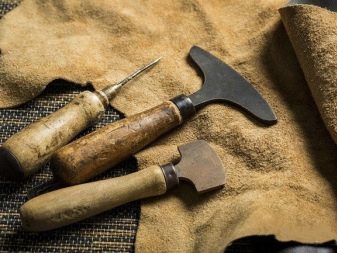
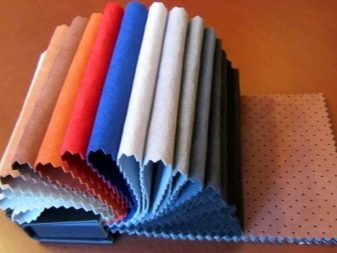
How to check for naturalness?
Knowing a few simple rules, it will not be difficult to correctly determine the nature of the origin of products. If a finished product is purchased, the manufacturer is obliged to warn about the material from which the product was made. Unfortunately, both in the market and in shopping centers, you can find a fake and spend a lot of money on poor quality products.
- To distinguish a good product from a low-quality product, it is enough to move your hand over it - in some places the natural material will change color.
- Products made from animal skin cannot have a uniform texture - pores and other marks will certainly be visible on it.
- You can understand the quality and nature of the material with the help of tactile sensations. Natural suede is distinguished by its softness, it is pleasant and delicate to the touch, in contrast to the substitute, which is characterized by roughness.
- It is necessary to carefully examine the interior trim - a solid cut of the leather indicates the natural origin of the material. If a tissue layer was noticed, it is an artificial product.
- The smell will also help you know the quality of the suede product. A pronounced smell indicates naturalness, while its absence or the presence of synthetic impurities indicates the opposite.
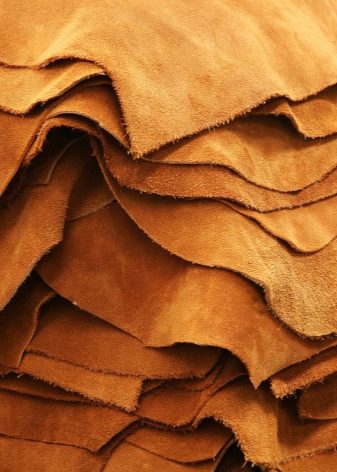
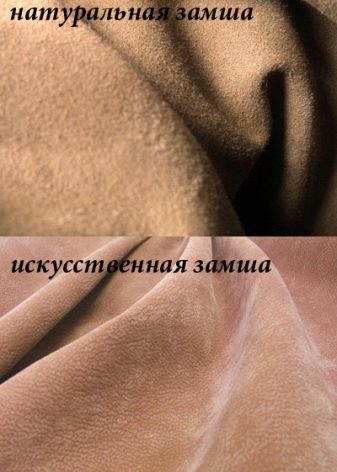
Water test
Using plain water, you can easily test suede at home - just drip a few drops of liquid onto the surface of the material. Real products will immediately absorb it, leaving a characteristic mark.
If the suede is artificial, then the water will simply slide down without leaving even a wet trail.
Having learned this and the other above methods of checking products, a person will protect himself from fraudsters without spending a large amount on a fake.
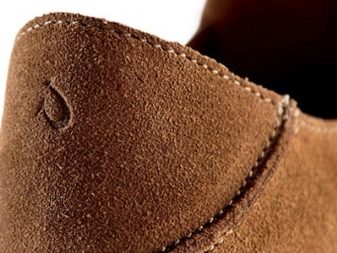
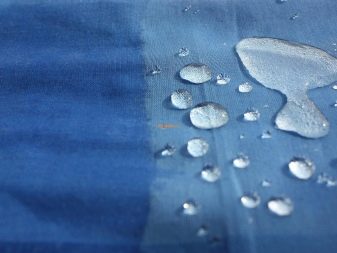
The positive qualities of the material include a number of features.
- This material is considered "breathable", due to which the skin will receive the required amount of oxygen.
- Suede is pleasant to the touch. It is soft with a delicate velvet texture.
- Attractive presentation, which is not inferior even to natural leather. Some stylists and designers find this material to be the most attractive and expressive.
- Clothes and shoes made of suede keep warm for a long time, giving comfort.
- A light weight.
- The material does not cause an allergic reaction.
- Suede products have a dense and durable texture.
- Cleaning at home using soap is possible.
- Quality products are renowned for their durability and elasticity.
- Products made from natural materials will look great at a festive event.



The material also has some disadvantages.
- The products have a high price, which is beyond the means of most consumers.
- Excessive moisture spoils the appeal of suede.
- The material gets dirty quickly. Dirt and dust are immediately visible.
- Products need constant and accurate care.
- For cleaning it is necessary to use special means and tools.
- Products made from natural suede are not recommended for everyday wear, especially if you often use public transport.
- Stains should be removed from the surface as quickly as possible.
- Without additional processing, suede gets wet in heavy rain.
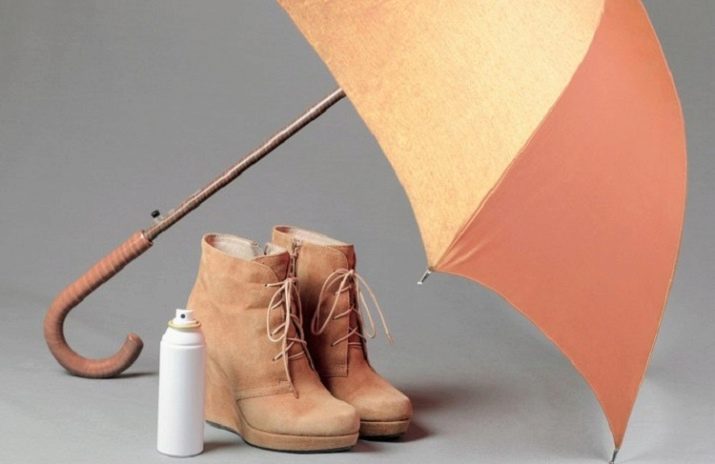
Prevention of contamination
In order for products made from natural materials to retain their presentation for a long time, it is necessary not only to properly care for them, but also to regularly carry out preventive maintenance.
Getting rid of some contaminants can be very problematic, as well as returning the product to its original attractiveness.

Practical advice
Immediately after purchase, it is advisable to process the product using a cloth or a brush with a mild thief that will not damage the texture. Outerwear such as coats, jackets or raincoats can be cleaned using a regular vacuum cleaner to help freshen up the garment quickly and effortlessly.
To protect your purchase from liquids, dust and other contaminants, you need to use special repelling agents - they will protect the product by forming a strong protective film without spoiling its attractiveness. It is important to properly handle the item the first time.
The work should be carried out in several stages. The agent is sprayed on the surface and the product is left until it is completely dry. It is forbidden to place things in direct sunlight or near a heater. This procedure is repeated two times.
Then you need to wait about a day, and only after that go out in shoes or clothes on the street. When the level of humidity outside the window is high, it is recommended to use moisture protection products every day.

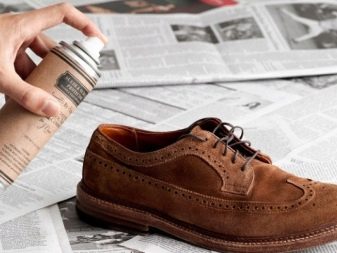
How to properly clean the material?
In dry and frosty seasons, snow is removed from shoes, clothes and other things by shaking. Then the products are gently wiped off with a soft cloth and left to dry at a compact temperature. Once the moisture has been removed, you can begin cleaning.
It is important to get rid of stains and dirt as soon as possible, before they have eaten into the texture of the suede. However, some people make a mistake in the drying process using hair dryers, heaters and other heat sources. This is absolutely impossible to do, since the elasticity and appearance of the product are lost.
To clean the item from dried dirt, you need to follow a series of actions described below.
- Using a special suede brush, you need to get rid of large pieces of dirt and anything that comes off the surface.
- Then you need to wipe the place with a soft textile material.
- After that, you need to prepare a mixture of washing powder and water. You can also use any non-aggressive household chemicals. The main thing is that it does not contain bleach.
- By wetting the sponge in the solution, you need to gently wipe off any traces of dirt. If necessary, repeat the procedure several times.
- After that, you need to treat the product with a damp cloth and a piece of dry silk material.
- If a change in texture is noticed (the surface has become smooth), you need to hold the brush over the boiling water for a while, then walk it along the surface, combing the suede.

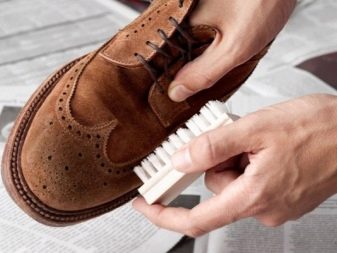
Greasy stains
To remove grease or oil stains, you need to prepare tooth powder or talcum powder. First of all, you need to treat the place with one of the above means with a brush. This method is good if the trail is fresh. Some people use gasoline because it gives good results. But this method is rarely used due to the strong smell.
The second method is to remove the stain with a brush and a bar of dry soap. After that, the place of pollution is watered with warm water, wiped and left to dry.
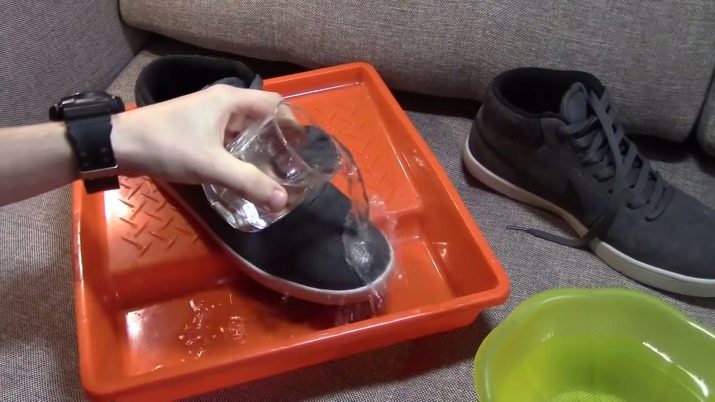
During the cleaning process, it is recommended to use gloves to protect the skin of the hands. It is advisable to have your clothes dry cleaned at least once a year.
If you properly care for natural material, then suede products will delight you with their beauty for a long time.
How to distinguish natural from artificial suede is described in the next video.



